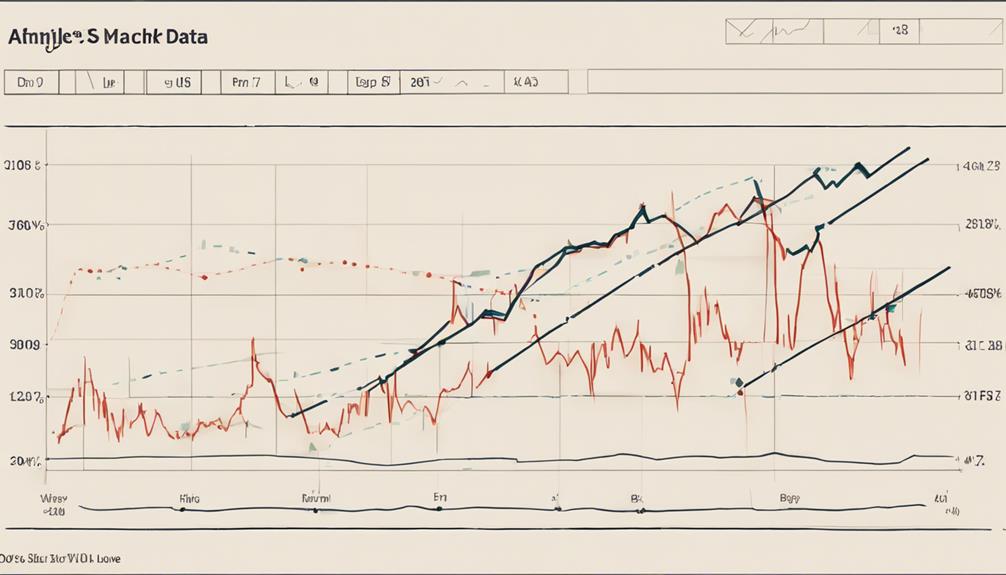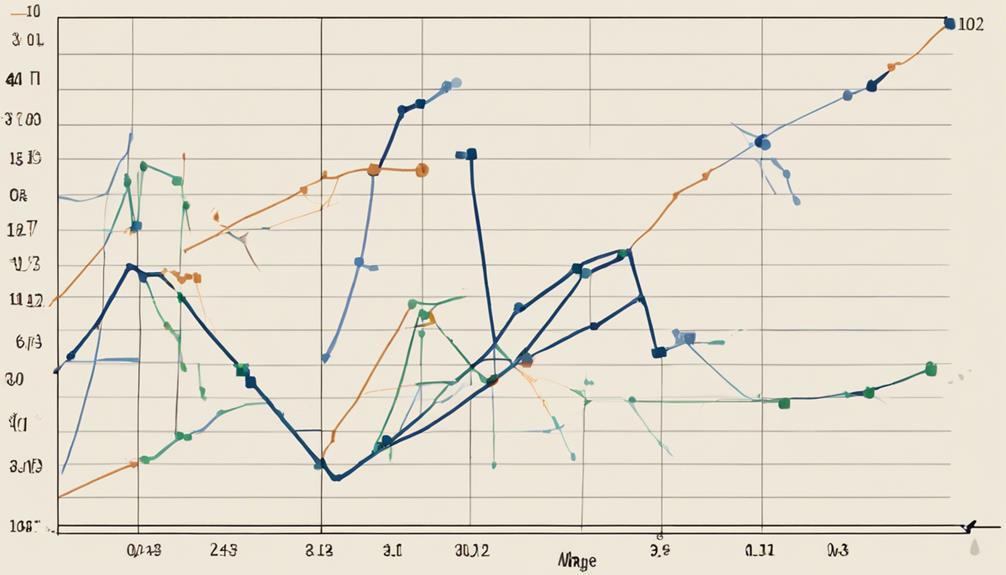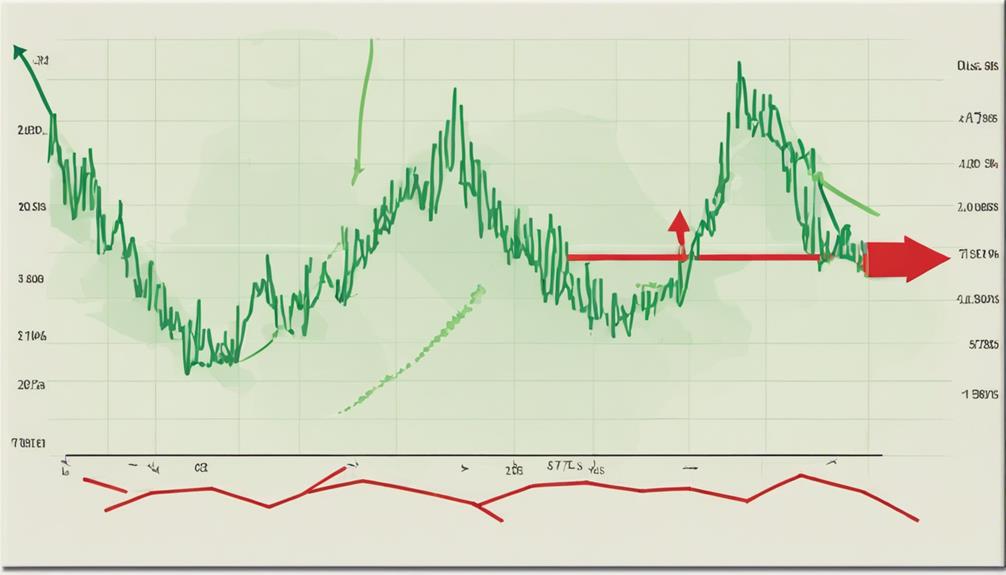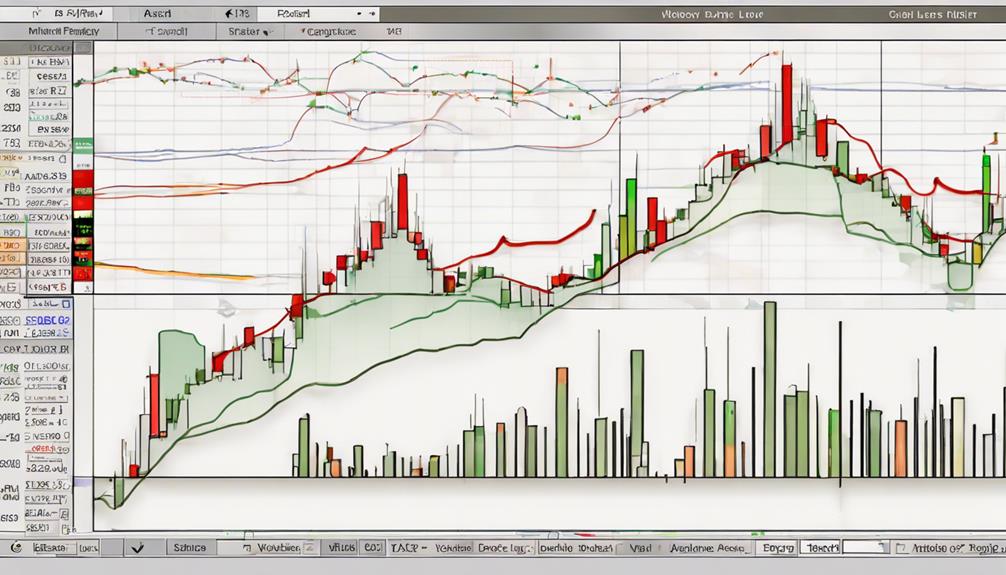When navigating the complexities of the stock market, understanding the Advance Decline Line can prove to be a valuable asset in your trading arsenal.
This indicator, often overlooked by novice investors, holds a wealth of insights that can potentially enhance your decision-making process and maximize your profits.
As you explore the intricacies of the Advance Decline Line, you'll uncover how it can provide you with a unique perspective on market dynamics, guiding you towards more informed and strategic investment choices.
Understanding Advance Decline Line
To comprehend the Advance Decline Line (ADL) effectively, investors must grasp its significance in analyzing market breadth and differentiating index movements. The ADL serves as a vital financial indicator, revealing the balance between advancing and declining stocks in the market. By understanding this indicator, investors can gain valuable insights into the overall market sentiment and participation.
It helps distinguish whether index movements are being primarily driven by a few influential stocks or reflect a broader market trend. Analyzing the ADL alongside relevant indexes enables investors to assess market risk, confirm trends, predict potential reversals, and identify divergences. Ultimately, a thorough comprehension of the ADL empowers investors to make informed decisions, identify opportunities, and effectively manage risks in the financial market.
Calculating Advance Decline Line

Calculation of the Advance Decline Line involves subtracting the total declining stocks from the total advancing stocks on a given day. This technical indicator relies on net advances, which represent the disparity between advancing and declining issues.
By calculating the A/D Line, traders can confirm trends in stock market breadth and determine potential shifts in market direction. Daily assessments of the A/D Line reveal crucial insights into the momentum of the stock index and provide guidance on the overall market sentiment.
Understanding how advancing issues compare to declining issues is key to interpreting the A/D Line accurately. Mastery of this calculation is vital for traders seeking to predict market reversals and make informed decisions based on market breadth data.
Interpreting Advance Decline Line Data

Interpreting Advance Decline Line data involves analyzing its trend in relation to the stock index to validate market direction and potential shifts. When examining A/D line data, consider the following:
- A rising A/D line suggests broad market strength and participation in rallies.
- Falling A/D line indicates weakening market breadth and potential end of a rally.
- Divergence between A/D line and index can signal a trend reversal.
Using Advance Decline Line Effectively

Utilize the Advance Decline Line effectively to enhance your stock market analysis and decision-making process. The ADL, by gauging the daily difference between advancing and declining stocks, offers valuable insights into market breadth and participation, reflecting the market's overall health.
This indicator can assist in predicting potential reversals in stock index movements. By integrating ADL analysis with stock index trends, traders can make well-informed decisions. Understanding how to interpret ADL proficiently can elevate your technical analysis skills and refine market trend predictions.
How Does the Chaikin Money Flow Indicator Compare to the Advance Decline Line as a Stock Market Indicator?
When it comes to mastering stock analysis indicators, the Chaikin Money Flow Indicator and the Advance Decline Line are both valuable tools for assessing the stock market. The Chaikin Money Flow Indicator focuses on the flow of money, while the Advance Decline Line measures market breadth. Both indicators offer unique insights for investors.
How Can I Use the Advance Decline Line as a Stock Market Indicator?
When it comes to analyzing the stock market, reading the advance decline line can be a powerful indicator. By tracking the number of advancing and declining stocks, investors are able to gauge market breadth and overall strength. This information can help in making informed decisions about buying or selling stocks.
Advanced Strategies With Advance Decline Line

To enhance your stock market analysis and decision-making process, consider implementing advanced strategies with the Advance Decline Line. Utilize divergences between the ADL and stock index for predicting potential trend reversals effectively.
Incorporate other technical indicators to confirm market trends and make informed trading decisions. Monitor the ADL for breakouts or breakdowns to receive early signals of upcoming market moves and changes in market breadth. By combining sector analysis with the ADL, gain insights into specific areas of market strength or weakness for strategic trading opportunities.
Understanding crossovers, trend slopes, and divergences in the ADL chart enhances your trading effectiveness.
Frequently Asked Questions
How Do You Use Advance-Decline Line Indicator?
To use the advance-decline line indicator, analyze the ratio of advancing to declining stocks daily. This tool assists in understanding market breadth and predicting trend changes. Plot it against an index to confirm trends and identify potential reversals effectively.
How Do You Calculate the Advance-Decline Line?
To calculate the advance-decline line, subtract the number of declining stocks from advancing stocks daily. Add this difference to the previous day's value. The ADL tracks market breadth, confirms trends, and predicts reversals.
How Do You Find Advance and Decline?
To find advance and decline, count the number of stocks rising and falling in a set period. This data helps gauge market breadth and sentiment. Traders and analysts rely on these figures for insights into stock performance.
What Is the TOS Advance-Decline Indicator?
The TOS Advance-Decline Indicator on Thinkorswim tracks daily stock movements, helping you gauge market breadth and direction. It's a cumulative indicator reflecting market sentiment, confirming trends, and spotting potential reversals for informed decisions.
Conclusion
In conclusion, mastering the Advance Decline Line is essential for any trader looking to navigate the stock market successfully.
By understanding, calculating, interpreting, and utilizing this key indicator effectively, you can make informed decisions and stay ahead of market trends.
With advanced strategies at your disposal, you can confidently assess market momentum and breadth, ultimately leading to more profitable trading outcomes.
Master the Advance Decline Line to master the market.


